
How to grow Aubrieta in a pot?
Our tips for success
Contents
Forming beautiful cushions of small white, pink, red, violet, and blue flowers, Aubrieta is hard to miss. Not only is its abundant and colourful spring flowering highly decorative, but its evergreen foliage is equally interesting. This very hardy alpine perennial comes in about a dozen species and numerous varieties, such as Aubrieta deltoidea, Aubrieta ‘Cascade Red’, and Aubrieta ‘Royal Blue’. The choice is vast. Easy to grow and requiring little maintenance, it is suitable for rockeries, walls, borders, and paving ornaments, as well as in pots or containers on a balcony or terrace.
Discover our tips for successfully growing Aubrietas in pots.
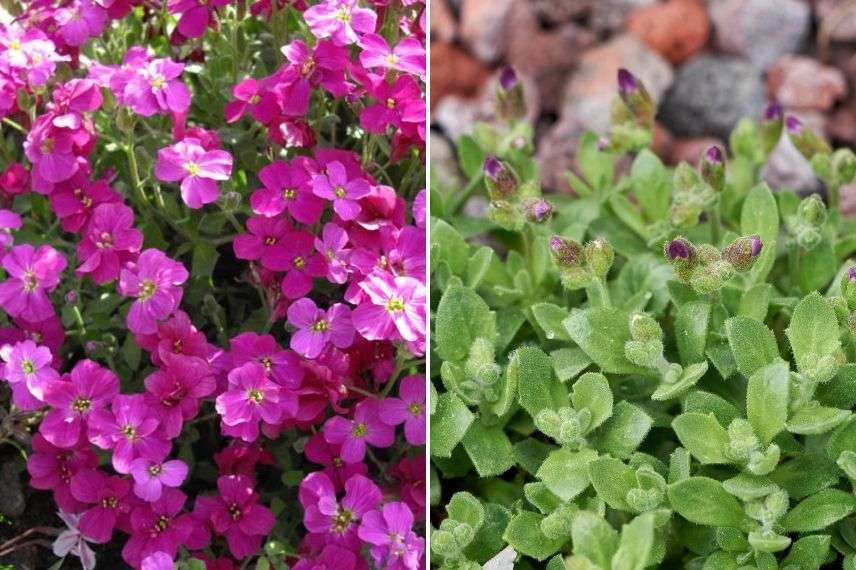 Crimson red flowers of Aubrieta ‘Bressingham Red’ (photo Wikipedia) and evergreen leaves of Aubrieta
Crimson red flowers of Aubrieta ‘Bressingham Red’ (photo Wikipedia) and evergreen leaves of Aubrieta
What type of pot to choose?
First of all, know that it is preferable to plant Aubrieta solitarily, as it likes to spread. Whether it’s a pot, a planter, or a hanging basket, the container should be between 15 and 20 cm deep. Round pots generally have a capacity of two or three litres, and their diameter ranges from 16 to 20 cm. Finally, prefer terracotta pots, which are more breathable than plastic pots.
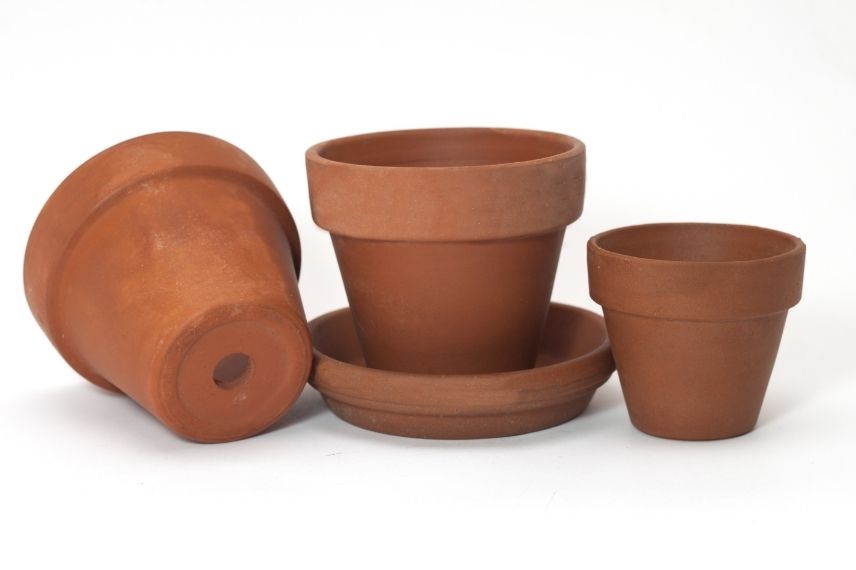
Terracotta pots are porous and allow for good air and water circulation.
What substrate to use?
The special compost for flowering plants is particularly suitable for growing perennials in pots. It provides nutrients to the plants for good growth and abundant flowering. It can also be mixed in equal parts with garden soil. Aubrieta prefers light, cool substrates that are especially well-drained. The presence of gravel or small stones is therefore not an issue for it.
Discover other Aubrieta - Rock Cress
View all →Available in 2 sizes
Available in 1 sizes
Available in 0 sizes
Available in 1 sizes
Available in 1 sizes
Available in 1 sizes
Available in 1 sizes
Available in 1 sizes
Available in 1 sizes
Available in 1 sizes
When and how to plant Aubrieta in a pot?
In a pot, Aubrieta is best planted from April to May or from September to November, avoiding periods of frost and extreme heat.
- Soak the bucket in a basin of water to thoroughly moisten the root ball and expel any air it may contain.
- In the meantime, prepare your pot. If it is not perforated, drill holes to allow excess water to drain during watering.
- If necessary, prepare your mix of potting soil and garden soil.
- Place a layer of clay balls or gravel at the bottom of the pot for optimal drainage.
- Fill the pot with substrate up to 2-3 cm from the rim of the pot.
- Remove your Aubrieta from the bucket and place it in your container. The top of the root ball should be level with the substrate.
- Firm the soil and water.
Read also
Potted plants: what is top-dressing?When and how to sow Aubrieta?
Sowing Aubrieta seeds is easy to do. It is carried out from February to June in a seed tray.
- Obtain a seed tray or a mini greenhouse.
- Sow the seeds evenly in a special seed compost that has been pre-moistened and firmed.
- Cover with a very thin layer of substrate.
- Lightly press down and water using a spray bottle.
- Place the seed tray in a bright location, out of direct sunlight, at a temperature between 18 and 20°.
- Cover the sowing.
- Ventilate regularly and continue watering throughout germination to keep the substrate moist. Be cautious, as excessive watering can cause white rust.
Seed germination occurs between 14 and 21 days.
When to transplant Aubrieta?
Transplanting in buckets can be done when the seedlings have 2 or 3 leaves. Subsequently, once well-developed, you can replant them in a container or pot. Planting in the garden is possible when the soil is warm, between late May and early June.
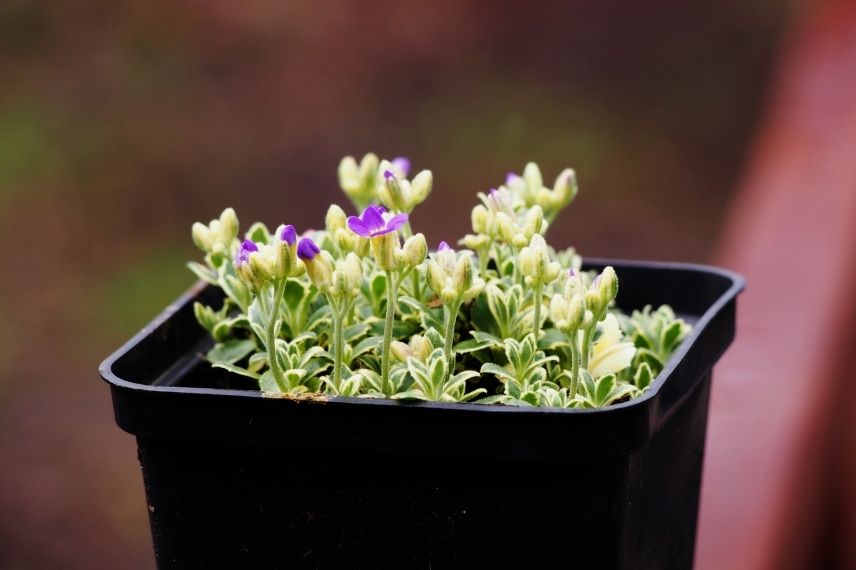
Young shoots of Aubrieta in buckets ready to be replanted in a container, pot, or open ground
What exposure does Aubrieta in pots need?
Plant your pot in full sun. Indeed, Aubrieta flowers best in a very sunny position. This way, it creates a beautiful flowering tapetum, cascading from its container.
How to care for Aubrietas in pots?
Easy to grow and low-maintenance, Aubrieta requires very little care.
-
Watering
Regular watering is recommended during its first year and during long dry spells. Indeed, high temperatures and lack of water can cause its foliage to yellow temporarily. Wait until the substrate is dry before watering and avoid flooding it, as the roots cannot tolerate excess water. Mulching also helps keep it cool in summer.
-
Fertilisation
A spring application of compost ensures a splendid flowering. During the flowering period, once or twice a week, you can dilute a liquid fertiliser for flowering plants in your watering can.
-
Pruning
Pruning Aubrieta is not obligatory. However, to maintain a beautiful compact clump and ensure a lovely flowering the following spring, cut it back to ground level after flowering using shears. This rejuvenates the plant by removing dry or overly old stems.
-
Repotting
This should be done every year at the beginning of spring.
-
Possible diseases and pests
Excessive watering can lead to white rust disease. This results in whitish spots appearing on both sides of the leaves. Treat the plant with horsetail or nettle manure and remove the affected leaves.
Aubrieta can also be attacked by aphids. To eliminate them, spray it with a mixture of one litre of water, two tablespoons of liquid black soap, and one tablespoon of baking soda.
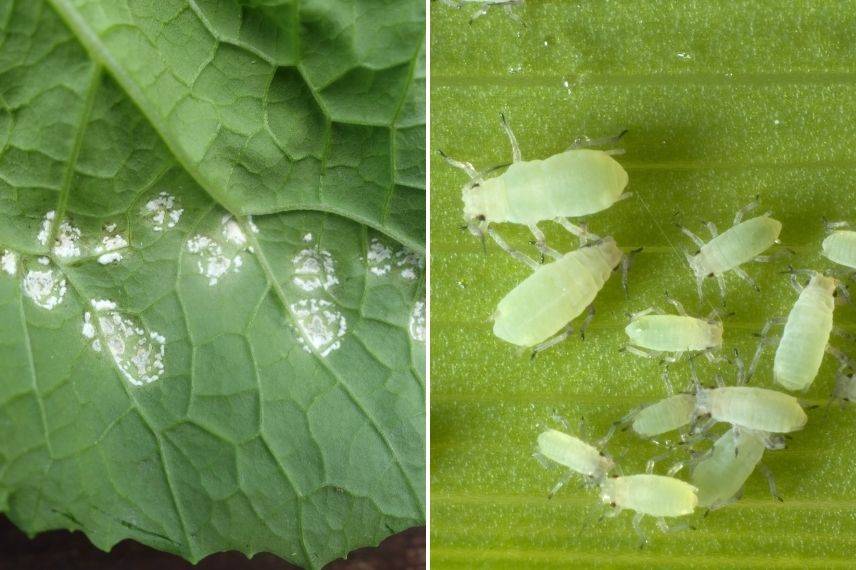
On the left: white rust disease (photo Scot Nelson – Flickr); on the right: aphids.
To go further
Discover our range of Aubrietes on our site.
Everything you need to know about planting, growing, and maintaining Aubrietes.
Our tips for successfully sowing your perennial plants and sowing in seed trays.
Find our article on getting rid of rust disease.
Our guide to help you choose your fertiliser for planters and pots.
- Subscribe!
- Contents
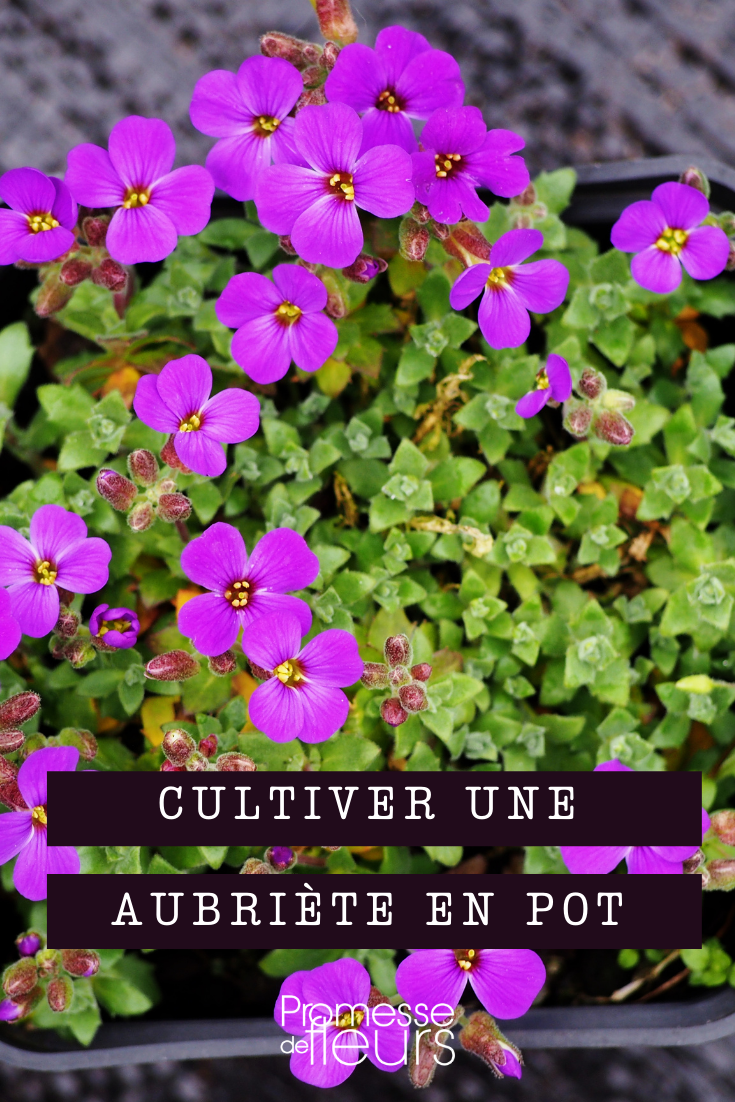































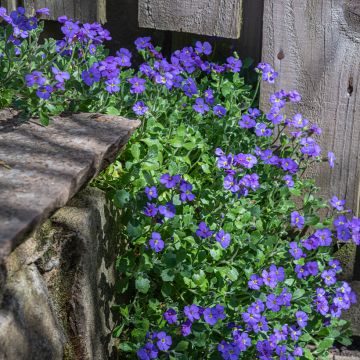
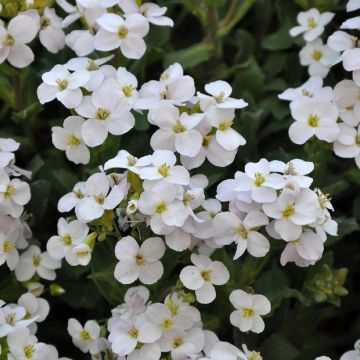
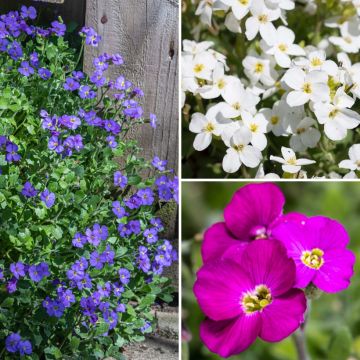
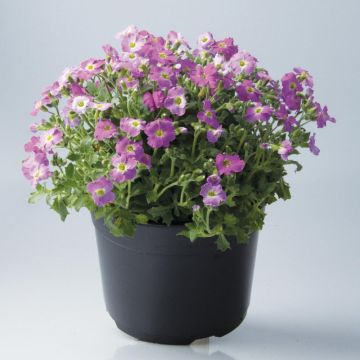


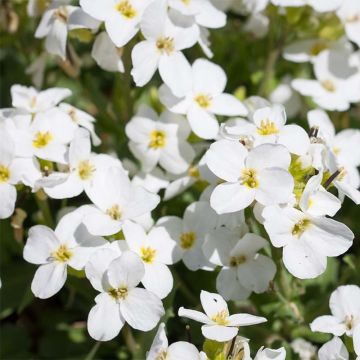
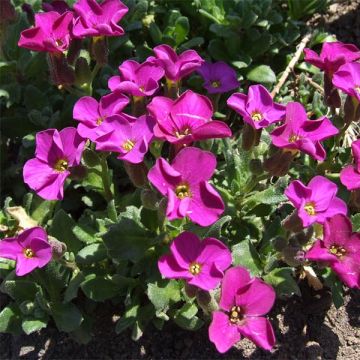
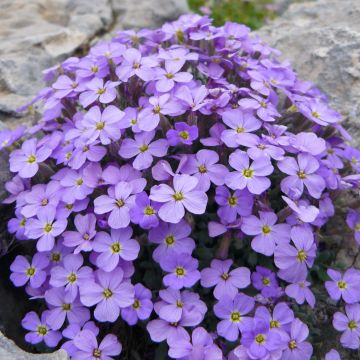
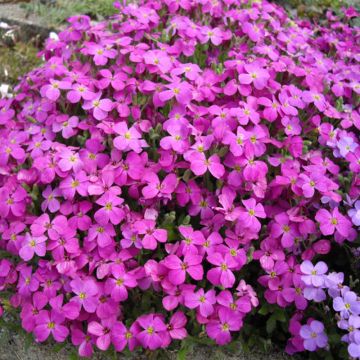
Comments